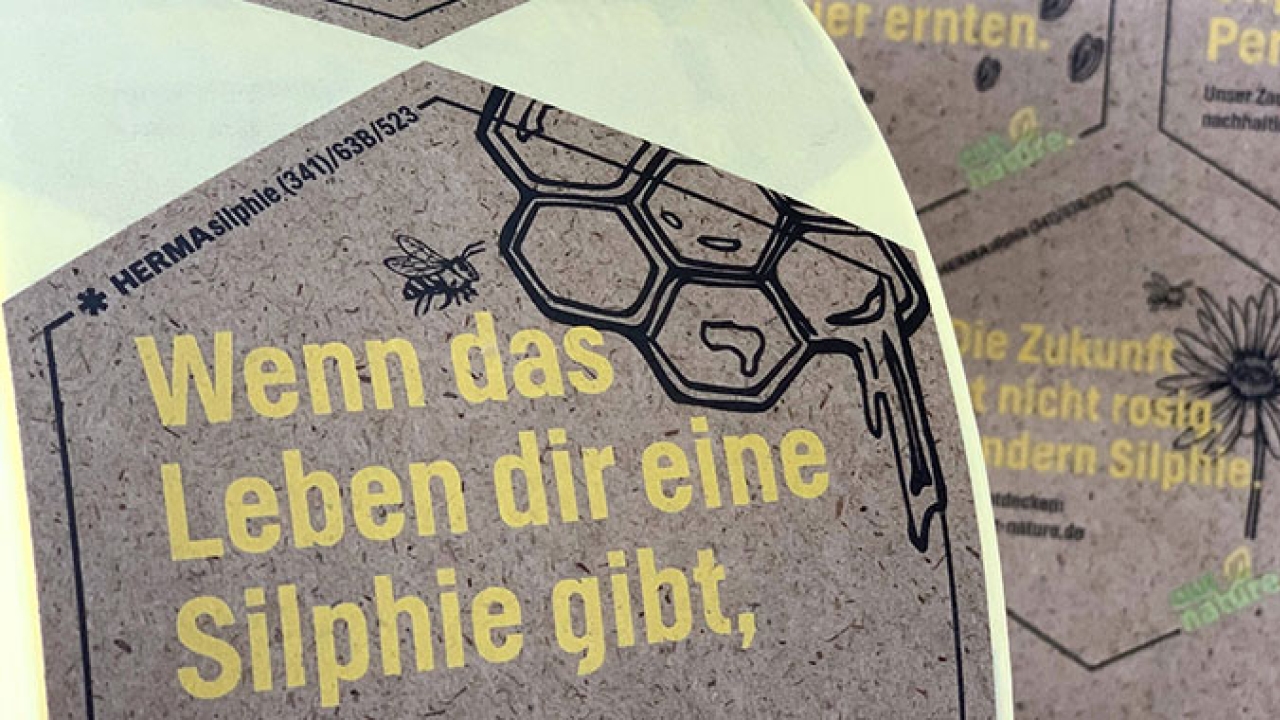Herma launches labelstock made with cup plant fibers
Herma has released HERMAsilphie (grade 341), a novel labelstock incorporating fibers of Silphium perfoliatum, commonly known as a cup plant, cultivated in Germany as an energy crop for use in biogas production.

These fibers are separated in a biothermal process before the energy generation phase and then converted into a new regional and sustainable raw material. Labels made with the paper are suitable for printing without any further treatment. Embossing and other embellishment can add sophistication while retaining a natural look because individual fibers of the cup plant remain visible in the material. This texture also serves as a visual acknowledgment of the paper’s sustainability.
The labelstock incorporates the Herma UVA adhesive 63B, a versatile material offering excellent adhesive properties.
‘This new material, made entirely in Germany, enables us to extend our environment-friendly portfolio in a focused way,’ commented Susanne Daiber, managing director of Etiket Schiller, the first converter to use the new labelstock. ‘Our customers now have access to a further highly appealing green packaging option for cosmetics, beverages, and food.’
The proportion of cup plant fibers in the label material is currently at least 35 percent, but it can be raised to 50 percent in the future. This significantly curbs the labels’ CO2 footprint by reducing the share of imported wood pulp, which is mainly sourced from distant countries. In addition, cup plant labels can be recycled in the regular waste paper streams.
‘Our use of the cup plant provides further evidence of how the label production can conserve resources,’ commented Dr Ulli Nägele, Herma’s head of self-adhesive materials development. ‘We are keeping our eyes open in this respect and will continue to pursue other promising leads.’
Stay up to date
Subscribe to the free Label News newsletter and receive the latest content every week. We'll never share your email address.

